 W
WAbdullah ibn Muhammad was the seventh Emir of Córdoba, reigning from 888 to 912 in Al-Andalus.
 W
WÆthelflæd, Lady of the Mercians ruled Mercia in the English Midlands from 911 until her death. She was the eldest daughter of Alfred the Great, king of the Anglo-Saxon kingdom of Wessex, and his wife Ealhswith.
 W
WAbu ʿĀmir Muḥammad ibn ʿAbdullāh ibn Abi ʿĀmir al-Maʿafiri, nicknamed al-Manṣūr, usually simply called Almanzor, was an Andalusian military leader and statesman. As the chancellor of the Umayyad Caliphate of Córdoba and hajib (chamberlain) for the weak Caliph Hisham II, Almanzor was the de facto ruler of Islamic Iberia.
 W
WArduin was an Italian nobleman who was King of Italy from 1002 until 1014.
 W
WArnulf, also known as the Bad or the Evil, a member of the Luitpolding dynasty, held the title of Duke of Bavaria from about 907 until his death in 937.
 W
WÁrpád was the head of the confederation of the Magyar tribes at the turn of the 9th and 10th centuries. He might have been either the sacred ruler or kende of the Hungarians, or their military leader or gyula, although most details of his life are debated by historians, because different sources contain contradictory information. Despite this, many Hungarians refer to him as the "founder of our country", and Árpád's preeminent role in the Hungarian conquest of the Carpathian Basin has been emphasized by some later chronicles. The dynasty descending from Árpád ruled the Kingdom of Hungary until 1301.
 W
WBerengar I was the king of Italy from 887. He was Holy Roman Emperor between 915 and his death in 924. He is usually known as Berengar of Friuli, since he ruled the March of Friuli from 874 until at least 890, but he had lost control of the region by 896.
 W
WBernard I was the Duke of Saxony between 973 and 1011, the second of the Billung dynasty, a son of Duke Herman and Oda. He extended his father's power considerably.
 W
WBerthold, of the Luitpolding dynasty, was the younger son of Margrave Luitpold of Bavaria and Cunigunda, sister of Duke Erchanger of Swabia. He followed his nephew Eberhard as Duke of Bavaria in 938.
 W
WHermann Billung was the Margrave of the Billung March from 936 until his death. The first of the Saxon House of Billung, Hermann was a trusted lieutenant of Otto I, Holy Roman Emperor.
 W
WBoleslaus I the Cruel, also called Boleslav I, a member of the Přemyslid dynasty, was ruler of the Duchy of Bohemia from 935 to his death. He is notorious for the murder of his elder brother Wenceslaus, through which he became duke. Despite his complicity in this fratricide, Boleslaus is generally respected by Czech historians as an energetic ruler who significantly strengthened the Bohemian state and expanded its territory. His accomplishments include significant economic development due to an expansion in trade, the introduction of silver mining and the minting of the first local coinage, the Prague denarius.
 W
WBoleslaus II the Pious, a member of the Přemyslid dynasty, was Duke of Bohemia from 972 until his death.
 W
WBolesław the Brave, less often known as Bolesław the Great, was Duke of Poland from 992 to 1025, and the first King of Poland in 1025. He was also Duke of Bohemia between 1002 and 1003 as Boleslaus IV.
 W
WBruno the Great was Archbishop of Cologne from 953 until his death and Duke of Lotharingia after 954. He was the brother of Otto I, Holy Roman Emperor.
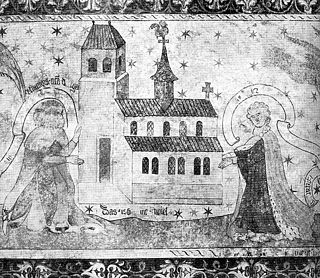 W
WBurchard III, a member of the Hunfriding dynasty, was the count of Thurgau and Zürichgau, perhaps of Rhaetia, and then Duke of Swabia from 954 to his death.
 W
WČaslav was Prince of the Serbs from c. 927 until his death in c. 960. He significantly expanded the Serbian Principality when he managed to unite several Slavic tribes, stretching his realm over the shores of the Adriatic Sea, the Sava river and the Morava valley. He successfully fought off the Magyars, who had crossed the Carpathians and ravaged Central Europe, when they invaded Bosnia. Časlav is remembered, alongside his predecessor Vlastimir, as founders of Serbia in the Middle Ages.
 W
WDinar was a 10th-century Georgian royal princess of the Bagrationi dynasty of Tao-Klarjeti and Queen regnant of Hereti. She is venerated as a saint. The Georgian Orthodox Church commemorates her on June 30.
 W
WEckard I was Margrave of Meissen from 985 until his death. He was the first margrave of the Ekkehardinger family that ruled over Meissen until the extinction of the line in 1046.
 W
WFajsz, also Falicsi, was Grand Prince of the Hungarians from about 950 to around 955. All information on him comes from De administrando imperio, a book written by the Byzantine Emperor Constantine VII Porphyrogenitus. No other contemporary source or later Hungarian chronicle preserved his name, suggesting that he did not take an active role in the politics of the Hungarian tribes' confederation.
 W
WGarcía Fernández, called of the White Hands, was the count of Castile and Alava from 970 to 995. In May 995, he was captured by a raiding party while out hunting. Wounded in the encounter, he was sent to Cordoba as a trophy, but died at Medinaceli in June 995.
 W
WGelou was the Vlach ruler of Transylvania at the time of the Hungarian conquest of the Carpathian Basin around 900 AD, according to the Gesta Hungarorum. Although the Gesta Hungarorum, which was written after 1150, does not indicate the enemies of the conquering Hungarians (Magyars) known from earlier annals and chronicles, it refers to local rulers—including Gelou—who are not mentioned in other primary sources. Consequently, historians debate whether Gelou was a historical person or an imaginary figure created by the unidentified author of the Gesta Hungarorum. In Romanian historiography, Gelou is one of three early-10th-century Romanian dukes with lands in the intra-Carpathian region of present-day Romania.
 W
WGéza, also Gejza, was Grand Prince of the Hungarians from the early 970s. He was the son of Grand Prince Taksony and his Oriental—Khazar, Pecheneg or Volga Bulgarian—wife. He married Sarolt, a daughter of an Eastern Orthodox Hungarian chieftain. After ascending the throne, Géza made peace with the Holy Roman Empire. Within Hungary, he consolidated his authority with extreme cruelty, according to the unanimous narration of nearly contemporaneous sources. He was the first Hungarian monarch to support Christian missionaries from Western Europe. Although he was baptised, his Christian faith remained shallow and he continued to perform acts of pagan worship. He was succeeded by his son, Stephen who was crowned the first King of Hungary in 1000 or 1001.
 W
WGuntram the Rich was a count in Breisgau, member of the noble family of the Etichonids, and possibly the progenitor of the House of Habsburg.
 W
WHaakon Sigurdarson was the de facto ruler of Norway from about 975 to 995. Sometimes he is styled Hakon the Powerful.
 W
WSigurd Håkonsson was a Norwegian nobleman and Jarl of Lade in Trøndelag.
 W
WHaakon Ericsson was Earl of Lade and governor of Norway as a vassal under Knut the Great.
 W
WHenry I, called the Great, was Count of Nevers and Duke of Burgundy from 965 to his death. He is sometimes known as Odo-Henry or Otto-Henry, since his birth name was "Odo" and he only adopted "Henry" on being elected duke of Burgundy.
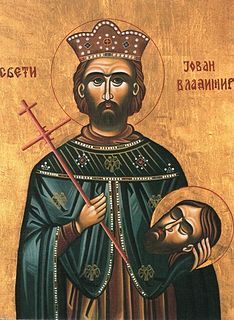 W
WJovan Vladimir or John Vladimir was the ruler of Duklja, the most powerful Serbian principality of the time, from around 1000 to 1016. He ruled during the protracted war between the Byzantine Empire and the Bulgarian Empire. Vladimir was acknowledged as a pious, just, and peaceful ruler. He is recognized as a martyr and saint, with his feast day being celebrated on 22 May.
 W
WLiudolf, a member of the Ottonian dynasty, was Duke of Swabia from 950 until 954. His rebellion in 953/54 led to a major crisis of the rising German kingdom.
 W
WManso I was the duke of Amalfi (966–1004) and prince of Salerno (981–983). He was the son of Duke Sergius I and the greatest independent ruler of Amalfi, which he controlled for nearly half a century. He is sometimes numbered Manso III.
 W
WMichael of Zahumlje, also known as Michael Višević or rarely as Michael Vuševukčić, was a semi-independent, or independent Slavic ruler of Zahumlje, in present-day central Herzegovina and southern Croatia, who flourished in the early part of the 10th century. Prince Michael of Zahumlje having a common boundary with the Serbia and probably with Kingdom of Croatia, but was an ally of Bulgaria. He was nevertheless able to maintain independent rule throughout at least a good part of his reign.
 W
WMieszko I was the ruler of Poland from about 960 until his death in 992 AD. He was a member of the Piast dynasty, a son of Siemomysł, and a grandson of Lestek. He was the father of Bolesław I the Brave and of Gunhild of Wenden. Most sources make Mieszko I the father of Sigrid the Haughty, a Scandinavian queen, the grandfather of Canute the Great and the great-grandfather of Gunhilda of Denmark, Canute the Great's daughter and wife of Henry III, Holy Roman Emperor.
 W
WOslac is regarded as the first ealdorman of York and its dependent territories. These included but may not have been limited to the southern half of Northumbria. His background is obscure because of poor source documentation. The latter has facilitated disagreement amongst historians regarding his family and ethnicity.
 W
WOsulf was high-reeve of Bamburgh and ruler of Northumbria. Sometimes called "earl", he is more surely the first recorded high-reeve of Bamburgh and the man who, after assisting in the death of its last independent ruler Erik Bloodaxe, administered the York-based Kingdom of Northumbria when it was taken over by the Wessex-based King Eadred of England in 954.
 W
WOtto I, called Otto of Worms, a member of the Salian dynasty, was Duke of Carinthia from 978 to 985 and again from 1002 until his death.
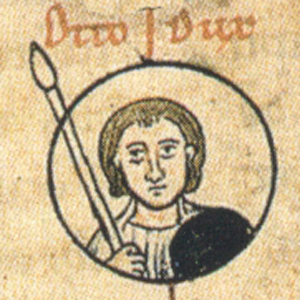 W
WOtto, called the Illustrious by later authors, a member of the Ottonian dynasty, was Duke of Saxony from 880 to his death.
 W
WPavle Branovic was the Prince of the Serbs from 917 to 921. He was put on the throne by the Bulgarian Tsar Symeon I of Bulgaria, who had imprisoned the previous prince, Petar, after he had become a Byzantine ally. Pavle ruled for four years, before being defeated by Zaharija, his cousin. Pavle was the son of Bran, the middle son of Mutimir of the Vlastimirović dynasty.
 W
WPetar Gojniković or Peter of Serbia was Prince of the Serbs from 892 to 917. He ruled and expanded the First Serbian Principality (Rascia), and won several wars against other family members that sought the crown. He was the first Serbian monarch with a Christian (non-Slavic) name.
 W
WPeter I was emperor (tsar) of Bulgaria from 27 May 927 to 969.
 W
WRhydderch ap Dyfnwal was an eminent tenth-century Cumbrian who slew Cuilén mac Illuilb, King of Alba in 971. Rhydderch was possibly a son of Dyfnwal ab Owain, King of Strathclyde, and could have ruled as King of Strathclyde. Rhydderch appears on record in about 971, when he is said to have killed Cuilén mac Illuilb, King of Alba, a man said to have abducted and raped Rhydderch's daughter. Following Cuilén's death, the Cumbrian Kingdom of Strathclyde endured an invasion by Cuilén's successor, Cináed mac Maíl Choluim, King of Alba. This Scottish attack could have been a retaliatory raid for Rhydderch's actions, and may have been undertaken in the context of restoring Scottish authority over the Cumbrian realm. If Rhydderch ever ruled as king it must have been before 973, when Dyfnwal's son, Máel Coluim, is accorded the title king.
 W
WRichard, Duke of Burgundy (858–921), also known as Richard of Autun or Richard the Justiciar, was Count of Autun from 880 and the first Margrave and Duke of Burgundy. He eventually attained suzerainty over all the counties of Burgundy save Mâcon and by 890 he was referred to as dux (duke) and by 900 as marchio (margrave). By 918 he was being called dux Burgundionem or dux Burgundiae, which probably signified less the existence of a unified Burgundian dukedom than feudal suzerainty over a multiplicity of counties in a specific region.
 W
WRudolph III was King of Burgundy from 993 until his death. He was the last ruler of an independent Kingdom of Arles, also called the Second Kingdom of Burgundy, and the last male member of the Burgundian group of the Elder House of Welf.
 W
WSpytihněv I, a member of the Přemyslid dynasty, was Duke of Bohemia from 894 or 895 until his death.
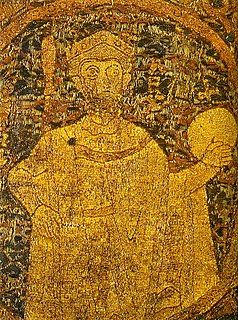 W
WStephen I, also known as King Saint Stephen, was the last Grand Prince of the Hungarians between 997 and 1000 or 1001, and the first King of Hungary from 1000 or 1001, until his death in 1038. The year of his birth is uncertain, but many details of his life suggest that he was born in, or after, 975, in Esztergom. At his birth, he was given the pagan name Vajk. The date of his baptism is unknown. He was the only son of Grand Prince Géza and his wife, Sarolt, who was descended from a prominent family of gyulas. Although both of his parents were baptized, Stephen was the first member of his family to become a devout Christian. He married Gisela of Bavaria, a scion of the imperial Ottonian dynasty.
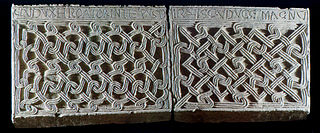 W
WStephen Držislav was King of Croatia from AD 969 until his death around 997. He was a member of the Trpimirović dynasty. He ruled from Biograd with Godemir as his Ban.
 W
WTaksony was the Grand Prince of the Hungarians after their catastrophic defeat in the 955 Battle of Lechfeld. In his youth he had participated in plundering raids in Western Europe, but during his reign the Hungarians only targeted the Byzantine Empire. The Gesta Hungarorum recounts that significant Muslim and Pecheneg groups settled in Hungary under Taksony.
 W
WTomislav was the first King of Croatia. He became Duke of Croatia in c. 910, was elevated to kingship by 925 and reigned until 928. At the time of his rule, Croatia forged an alliance with the Byzantines during their struggle with the Bulgarian Empire, with whom Croatia eventually went to war, culminating in the decisive Battle of the Bosnian Highlands in 926. To the north there were often conflicts with the Principality of Hungary. Croatia kept its borders and to some extent expanded on the disintegrated Pannonian Duchy.
 W
WTrpimir II was King of Croatia from 928 to 935. He was from the Trpimirović dynasty. Trpimir was probably the son of Duke Muncimir and younger brother of King Tomislav.
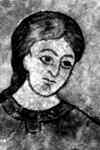 W
WVratislaus I, a member of the Přemyslid dynasty, was Duke of Bohemia from 915 until his death.
 W
WWenceslaus I, Wenceslas I or Václav the Good was the duke (kníže) of Bohemia from 921 until his assassination in 935. His younger brother, Boleslaus the Cruel, was complicit in the murder.
 W
WYaropolk I Sviatoslavich was a young and rather enigmatic ruler of Kiev (Kyiv) between 972 and 980. He was the oldest son of Svyatoslav. His royal title is traditionally translated as "Prince".
 W
WZaharija Pribislavljević or Zaharija of Serbia was Prince of the Serbs from 922 to 924. He defeated his cousin Pavle in 922. Zaharija was the son of Pribislav, the eldest son of Mutimir of the first Serbian dynasty.
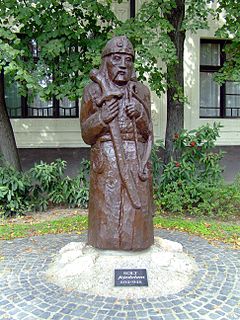 W
WZoltán, also Zolta, is mentioned in the Gesta Hungarorum as the third Grand Prince of the Hungarians who succeeded his father Árpád around 907. Although modern historians tend to deny this report on his reign, because other chronicles do not list him among the Hungarian rulers, there is consensus that even if Zoltán never ascended the throne, all monarchs ruling in Hungary from the House of Árpád after around 955 were descended from him.